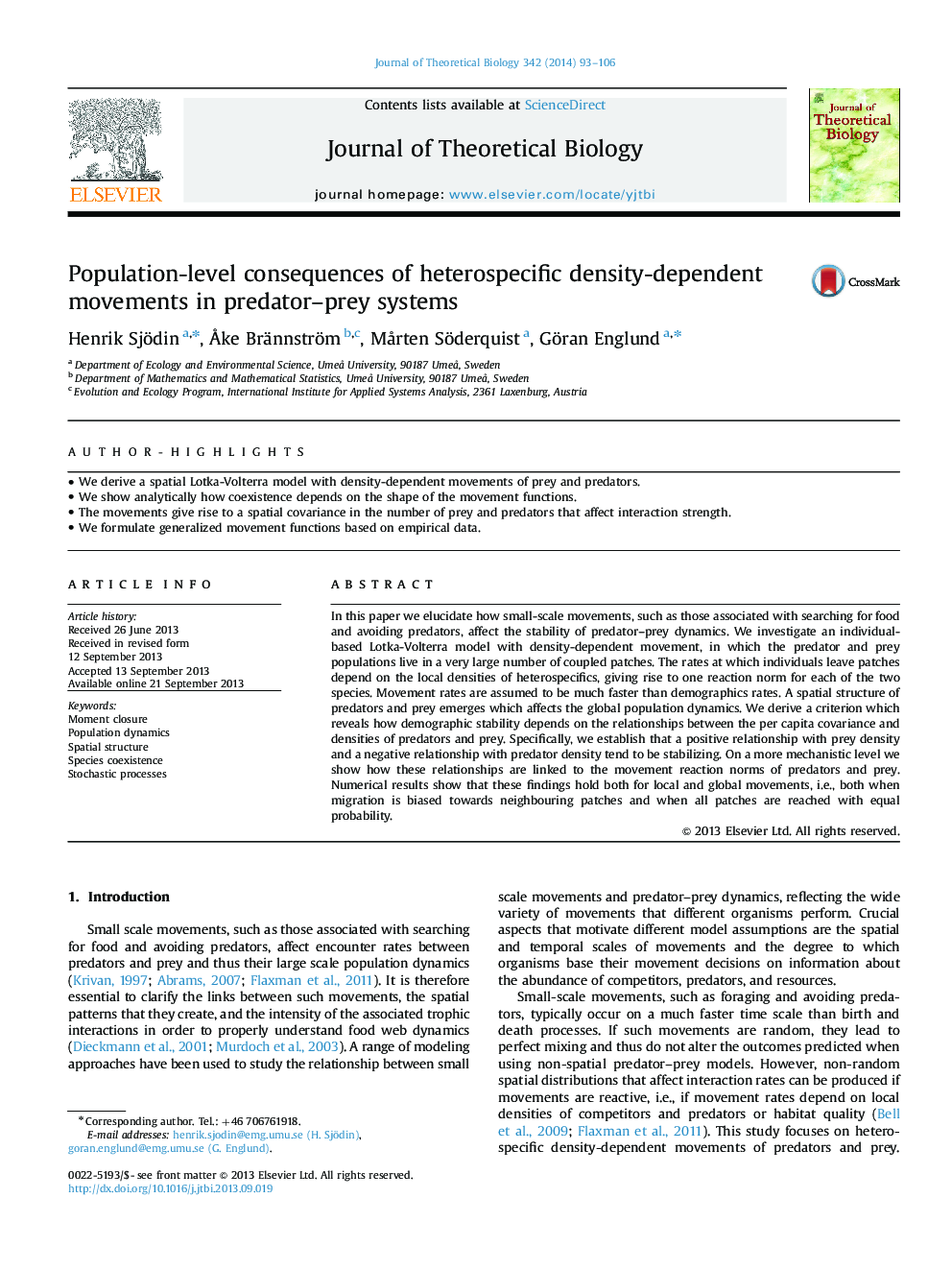| Article ID | Journal | Published Year | Pages | File Type |
|---|---|---|---|---|
| 4496216 | Journal of Theoretical Biology | 2014 | 14 Pages |
Author-Highlights•We derive a spatial Lotka-Volterra model with density-dependent movements of prey and predators.•We show analytically how coexistence depends on the shape of the movement functions.•The movements give rise to a spatial covariance in the number of prey and predators that affect interaction strength.•We formulate generalized movement functions based on empirical data.
In this paper we elucidate how small-scale movements, such as those associated with searching for food and avoiding predators, affect the stability of predator–prey dynamics. We investigate an individual-based Lotka-Volterra model with density-dependent movement, in which the predator and prey populations live in a very large number of coupled patches. The rates at which individuals leave patches depend on the local densities of heterospecifics, giving rise to one reaction norm for each of the two species. Movement rates are assumed to be much faster than demographics rates. A spatial structure of predators and prey emerges which affects the global population dynamics. We derive a criterion which reveals how demographic stability depends on the relationships between the per capita covariance and densities of predators and prey. Specifically, we establish that a positive relationship with prey density and a negative relationship with predator density tend to be stabilizing. On a more mechanistic level we show how these relationships are linked to the movement reaction norms of predators and prey. Numerical results show that these findings hold both for local and global movements, i.e., both when migration is biased towards neighbouring patches and when all patches are reached with equal probability.
